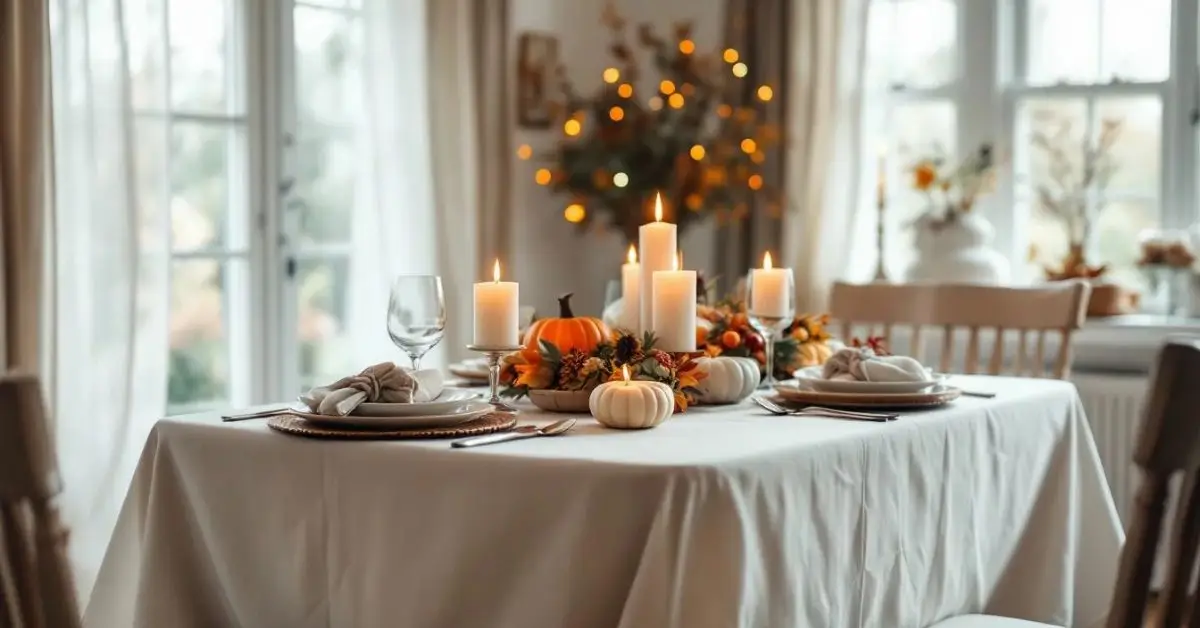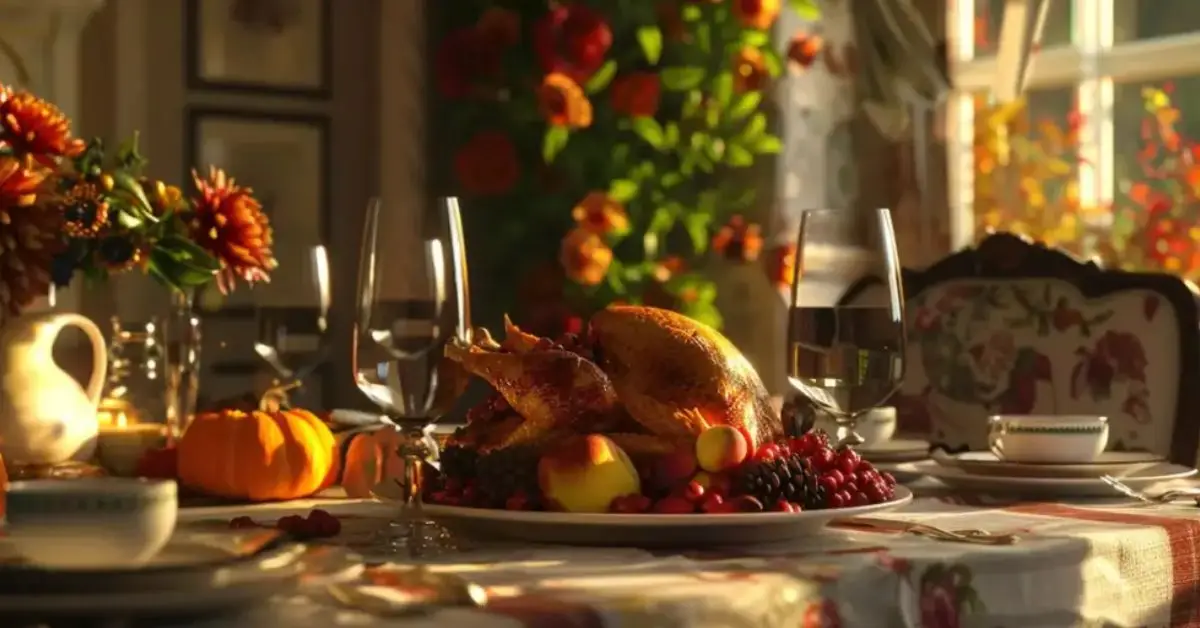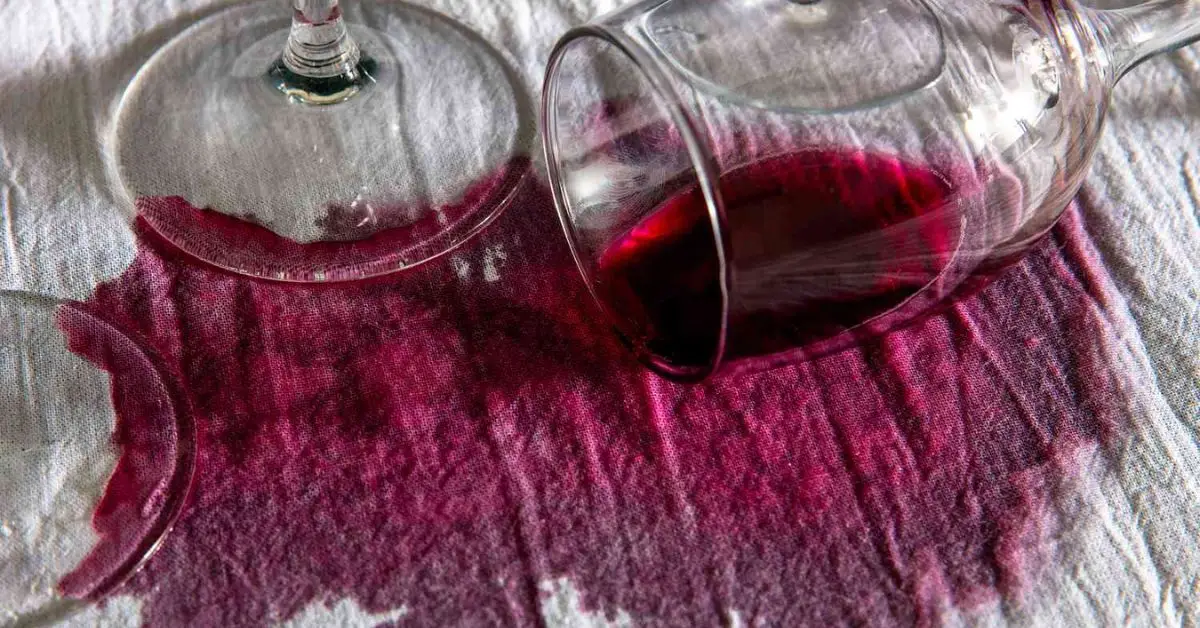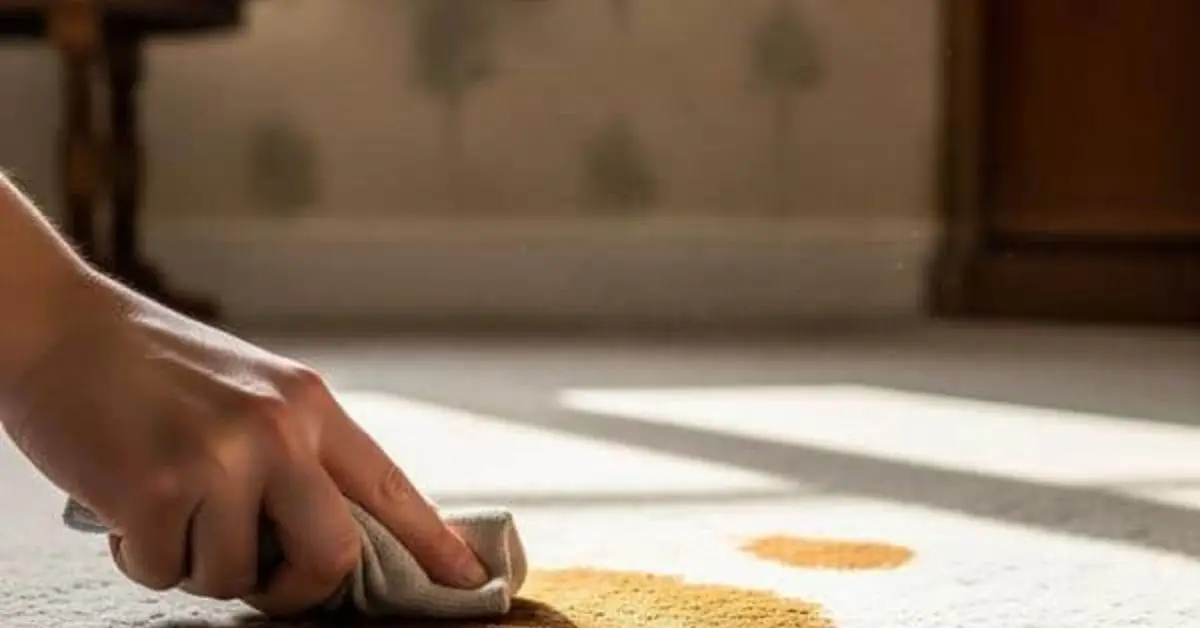11 Tough Holiday Stains That Destroy Your Table Setting—and the Fastest Ways to Fix Them
I’ve spent more than two decades helping people rescue their favorite linens, and I can tell you this—Thanksgiving is the one day of the year when a tablecloth doesn’t stand a chance. Between the turkey drippings, the wine toasts, the kids running around with cranberry sauce on their sleeves, and that one guest who somehow manages to spill coffee every single year… it adds up fast. And when the meal is over, you’re left staring at a battlefield of stains you didn’t plan for.
If you’ve ever pulled your tablecloth out of the wash only to find a pale outline of a grease spot or a red ring from cranberry sauce, you know the frustration. I’ve been there too. That’s why I wanted to create something that actually helps—not generic tips, not “quick hacks,” but clear and realistic guidance that comes from real stains, real homes, and real holiday chaos.
In this guide, I’ll walk you through the stains that cause the most damage and what you can do the moment they hit the fabric. My goal is simple: help you save the tablecloth you love, avoid making things worse, and feel confident enough that next Thanksgiving won’t leave you worried about your linens.
Before we dive in—what’s the one stain you dread the most every year?
Why Thanksgiving Table Linens Are “Accident Magnets”

I’ve cleaned enough holiday linens to see the same pattern every year: the tablecloth always takes the worst hit. And it’s not because you’re careless—it’s because the entire setup is built for spills. Once you understand why Thanksgiving makes a mess so easily, everything else we cover starts to make sense.
The Feast-Spread Reality
When you look at the Thanksgiving table from a cleaner’s perspective, it’s almost funny how stacked the odds are against you. You’ve got:
- hot plates loaded with butter and gravy
- serving bowls passed around from hand to hand
- wine glasses refilled mid-conversation
- kids reaching across the table
- pets circling the floor like little vacuum machines
There’s movement, heat, liquids, oils, and a dozen people doing different things at the same time. Something will fall. Something will drip. And your tablecloth is the first thing that catches it.
I’ve seen even the neatest hosts lose to a single spoonful of cranberry sauce sliding off the edge of a plate. It happens to everyone.
What Makes Tablecloths Harder To Treat
Here’s the part most people don’t think about: a tablecloth isn’t like a T-shirt or a napkin. It’s harder to rescue because:
- it covers a large area, so stains spread farther
- light hits it from above and below, making stains look darker
- many holiday tablecloths are decorative fabrics, not simple cotton
- thick weaves soak up oil fast
- patterns can hide a stain at first… but it sets deeper underneath
That’s why even a tiny drop of gravy can fade but leave a shadow after washing—it seeped into the fibers before you had a chance to act.
The Difference Between Stain Types
Not all stains behave the same, and if you use the wrong method, you can actually make things worse. Here’s the simplest way to think about it:
- Grease/oil stains sink into fibers and need dish soap or a degreaser
- Tannin/dye stains (wine, cranberry, coffee) bond to the fabric and need cold water + blotting
- Wax/solid stains harden on top and must be lifted, not scrubbed
A breakdown like this is why expert cleaning guides emphasize treating the type of stain instead of treating everything the same way. One reliable explanation comes from Ultra-Guard, which outlines how different food stains react on fabrics.
Why Timing Matters More Than Anything
If there’s one rule I wish every host knew, it’s this:
The longer a stain sits, the harder it is to remove.
Once a stain dries or gets heat on it, you’re in trouble. Just like a ceiling stain left untreated can become permanent if ignored, a tablecloth stain sets quickly—knowing how small mishaps escalate helps you act fast (learn more about ceiling stains and prevention here). Drying “sets” stains, especially:
- gravy
- butter
- wine
- tomato-based sauces
- sugary spills
That’s why cleaners—especially pros who handle linens every day—always push for quick action. A simple blot in the moment can save you from an hour of scrubbing later. And if you’ve ever washed a tablecloth twice and still seen a faint halo afterward, that’s exactly what happened: the stain set before you reached it.
Pre-Feast Preparations: Save Your Tablecloth Before the First Dish Hits

Before anyone sits down to eat, you can already stack the odds in your favor. A few simple decisions make your tablecloth far easier to protect—and even easier to clean when disaster strikes.
Choose the Right Material and Check the Care Label
I always tell people this: your tablecloth behaves based on its fabric. Cotton, linen, and synthetics don’t absorb or release stains the same way.
- Cotton absorbs fast but responds well to stain remover
- Linen looks beautiful but stains settle deeper because of its open weave
- Polyester/synthetics resist spills better but can trap oil if ignored
And that tiny care label you usually ignore? It tells you how far you can push the fabric before you damage it. Hot water, bleach, scrubbing—none of these are one-size-fits-all.
Use Protective Layering
Think of your table like a kitchen counter: the more layers between the food and the fabric, the safer you are.
- a thin base pad
- a runner down the center
- placemats under every plate
- coasters under cold glasses
- wipeable mats under kids’ seats
These small steps don’t ruin the beauty of the setup—they simply reduce how fast stains travel.
Keep a “Spill Kit” at Hand
This is my favorite trick because it saves people from panic. A simple kit you can grab in five seconds will save your tablecloth more than anything else.
Here’s what I recommend:
- dry microfiber cloths
- baking soda or cornstarch
- a cold water spray bottle
- a pre-treat stain pen
- a clean spoon for lifting wax or scraping spills
When you’re prepared, even a messy spill feels manageable.
Quick Guest-Friendly Habits
The best stain-removal technique is preventing stains from landing in the first place. A few subtle habits go a long way:
- avoid filling wine glasses to the top
- offer refills in the kitchen instead of across the table
- encourage buffet-style serving
- blot quietly and immediately when a spill happens
Most people won’t notice these small adjustments, but your tablecloth will thank you for them. Just like you prep your bathroom before guests arrive to avoid messes, small preemptive steps on the table—like using coasters or offering napkins—can prevent disaster before it starts (check out our guest-prep tips for bathrooms here).
The 11 Most Ruinous Thanksgiving Tablecloth Stains — And How To Remove Them

1. Grease And Turkey Drippings (Gravy)
• Why it ruins a tablecloth: Grease sinks deep into fibers, and the thick base of gravy makes it spread fast before you even notice it.
• Quick action steps (within first minutes)
- Blot gently with a dry microfiber cloth
- Cover the stain with baking soda or cornstarch
- Let it sit 10–15 minutes, then brush it off
For stubborn grease, similar to tough kitchen spills, you can follow specialized techniques to lift oils effectively (see more genius ways to remove grease stains from surfaces).
• Full removal method (at home)
A method often recommended in guides like how to remove Thanksgiving stains from Tom’s Guide works well here:
- Add a drop of dish soap
- Work it in gently
- Rinse from the back with cold water
- Wash on the warmest safe cycle
Do NOT: Use hot water first — it sets the grease permanently.
• Fabric-specific tweak
- Cotton: Dish soap works quickly
- Linen: Only blot; don’t rub
- Polyester: May need a mild degreaser
• Preventive tip: Place a protective pad or thick placemat under the carving and serving zone.
2. Butter / Oil Stains
• Why it ruins a tablecloth: Butter leaves a dark, oily ring because it contains both fat and milk solids.
• Quick action steps
- Blot
- Add cornstarch to absorb the oil
• Full removal method
- Treat with dish soap
- Rinse from the back
- Wash warm
Avoid: Circular scrubbing — it spreads the oil.
• Fabric-specific tweak
- Cotton: Warm water safe
- Linen: Blot softly
- Polyester: Oil bonds fast — wash immediately
• Preventive tip: Place butter plates on napkins or coasters.
3. Red Wine / Punch Spills

• Why it ruins a tablecloth: Tannins and dyes grip fabric fast and darken as they dry.
• Quick action steps
- Blot
- Add cold water
- Sprinkle salt to slow spreading
• Full removal method
- Use a dish soap + hydrogen peroxide mix for light fabrics
- Rinse
- Wash warm
Avoid: Hot water before pre-treatment.
• Fabric-specific tweak
- Cotton: Peroxide solution works well
- Linen: Stick to mild soap
- Polyester: Needs patient blotting
• Preventive tip: Pour wine away from the table.
4. Cranberry Sauce / Berry Stains
• Why it ruins a tablecloth: Berry skins contain strong natural colorants that stain deeply.
• Quick action steps
- Lift solids with a spoon
- Rinse cold from the back
- Blot
• Full removal method
- Use dish soap or a stain remover
- Wash warm
Avoid: Rubbing the pigment into the fibers.
• Fabric-specific tweak
- Cotton: Enzyme cleaners help
- Linen: Gentle soap only
- Polyester: May need a second wash
• Preventive tip: Serve berries and sauces from deeper bowls.
5. Pumpkin, Sweet Potato, And Orange Starch Stains
• Why it ruins a tablecloth: These foods have both pigment and starch, which glue themselves onto fibers.
• Quick action steps
- Scrape excess
- Blot with cold water
• Full removal method
- Soak in cool water with mild detergent
- Wash warm
Avoid: Letting the stain dry fully.
• Fabric-specific tweak
- Cotton: Enzyme detergent works
- Linen: Avoid aggressive agitation
- Polyester: Clean quickly
• Preventive tip: Use deeper bowls for thick sides.
6. Chocolate And Dessert Stains

• Why it ruins a tablecloth: Chocolate contains fat + cocoa dye — a stubborn combination.
• Quick action steps
- Scrape
- Rinse cold from the back
• Full removal method
- Use dish soap or enzyme cleaner
- Wash warm
Avoid: Hot water at the start — it sets proteins.
• Fabric-specific tweak
- Cotton: Enzyme cleaners work great
- Linen: Dab only
- Polyester: Might need a second wash
• Preventive tip: Give kids a separate dessert napkin.
7. Coffee / Tea Stains
• Why it ruins a tablecloth: Tannins create yellow-brown stains that cling tightly to fibers.
• Quick action steps
- Blot
- Add cold water
- Dab a small amount of dish soap
• Full removal method
- Treat with dish soap or a mild stain remover
- Wash warm
Avoid: Hard scrubbing while fresh.
• Fabric-specific tweak
- Cotton: Cleans easily
- Linen: Needs gentle handling
- Polyester: Tannins may linger — repeat wash
• Preventive tip: Use coasters during dessert.
8. Candle Wax Drips
• Why it ruins a tablecloth: Wax hardens around fibers and traps candle dye.
• Quick action steps
- Let wax cool
- Lift off the chunk
- Sandwich fabric between paper towels
- Use a low-heat iron to pull wax up into the paper
• Full removal method
- Treat leftover oily residue with dish soap
- Wash warm
Avoid: Removing hot wax — it spreads.
• Fabric-specific tweak
- Cotton: Iron method works strongly
- Linen: Keep heat low
- Polyester: Test a small spot first
• Preventive tip: Use dripless candles or glass sleeves.
9. Tomato-Based Sauce Stains

• Why it ruins a tablecloth: Tomato pigment + oil creates a deep orange stain that clings to fibers.
• Quick action steps
- Scrape
- Rinse cold
- Blot
• Full removal method
- Pre-treat with dish soap
- Wash warm
Avoid: Drying before the stain is gone.
• Fabric-specific tweak
- Cotton: Warm wash safe
- Linen: Use mild detergent
- Polyester: Might need two washes
• Preventive tip: Serve casseroles with deep, steady spoons.
10. Lipstick / Makeup Marks
• Why it ruins a tablecloth: Lipstick contains oils, waxes, and strong cosmetic dyes.
• Quick action steps
- Blot gently
- Dab a drop of dish soap
• Full removal method
- Work in dish soap
- Rinse
- Wash warm
Avoid: Rubbing dry — spreads the waxy color.
• Fabric-specific tweak
- Cotton: Cleans well
- Linen: Very gentle pressure
- Polyester: Often needs a second treatment
• Preventive tip: Offer a small napkin if guests are adjusting makeup.
11. Ink Or Marker Stains
• Why it ruins a tablecloth: Ink dives into fibers fast and spreads beneath the surface.
• Quick action steps
- Blot lightly
- Dab rubbing alcohol on a cotton pad
• Full removal method
- Continue dabbing with alcohol until lighter
- Rinse
- Wash warm
Avoid: Rubbing — ink spreads horizontally.
• Fabric-specific tweak
- Cotton: Alcohol works well
- Linen: Test a hidden area
- Polyester: Needs repeated dabbing
• Preventive tip: Give kids a craft-safe mat or washable placemat.
After The Feast: Clean-Up & Care To Make Your Tablecloth Last
Check For Residual Stains Before Drying
I always tell people this is the moment that decides whether a stain becomes permanent. If you dry a tablecloth while even the faintest mark is still visible, the dryer heat locks it in. Before you hit the start button, pause, hold the fabric up to the light, and make sure the stain is completely gone. If it isn’t, treat it again. It’s worth the extra ten minutes.
Wash Method By Fabric Type
You don’t need special equipment; you just need to match your wash routine to the fabric. Even magazines like Better Homes & Gardens have simple fabric-care breakdowns you can follow without overthinking it.
- Cotton: Warm wash, gentle detergent, and a full rinse. Cotton releases stains easily, but check edges where residue hides.
- Linen: Cool or warm water only. Use a mild detergent, avoid heavy agitation, and never twist linen to wring it out.
- Polyester Blends: Forgiving but can hold onto oily stains. Pre-treat well, wash warm, and don’t over-dry.
Always check care symbols — boring, yes, but they tell you exactly how much heat and agitation your tablecloth can handle.
Storage Tips To Keep Linens Fresh
Once everything is clean, store your linens the same way you’d store seasonal clothing.
- Fold loosely to avoid permanent creases
- Keep them in a cool, dry place
- Avoid plastic bins for long-term storage; fabric needs to breathe
- If a cloth has a faint stain you couldn’t fully remove, wash it again before storing. Even a light residue can yellow over time.
A simple rule: anything that looks “almost clean” will not look clean a year from now.
When To Call A Pro
Some fabrics really shouldn’t be handled at home. Delicate lace, older heirloom linens, and anything labeled dry-clean-only deserve professional attention. Local cleaners often publish their own guides explaining why. If you’re unsure, let a cleaner take a look. It’s cheaper than replacing a piece you love.
Common Mistakes Hosts Make — And How To Avoid Them

- Rubbing A Spill: Rubbing forces the stain deeper and wider. Blotting is always the better move — slow, steady, pressure-based.
- Using Hot Water Too Early: Hot water feels like the obvious fix, but it sets protein and pigment stains almost instantly. Always start cold.
- Ignoring The Care Label: Fabric type isn’t a small detail. If you treat linen like cotton or polyester like linen, you’ll fight stains that should have been easy wins.
- Drying With A Visible Stain: If the stain is still there now, it will be worse after heat. Re-treat first, always.
- Not Having A First-Response Kit: A tiny kit — baking soda, dish soap, a spoon, and a microfiber cloth — turns a panic moment into a simple routine. Most hosts don’t think about this until after something goes wrong.
Quick Reference Cheat Sheet: Match Stain to Tactic
| Stain Type | Immediate Step | Full Treatment |
|---|---|---|
| Grease / Turkey Drippings | Blot gently; sprinkle baking soda | Dish soap, cold rinse from back, warm wash |
| Butter / Oil | Blot; cornstarch | Dish soap, cold rinse, warm wash |
| Red Wine / Punch | Blot; sprinkle salt | Dish soap + peroxide (cotton only), cold rinse, warm wash |
| Cranberry / Red Berries | Lift solids; blot | Dish soap, cold rinse, warm wash |
| Pumpkin / Sweet Potato | Scrape; blot | Soak in cool water + mild detergent, warm wash |
| Chocolate / Dessert | Scrape; cold rinse | Dish soap/enzyme cleaner, warm wash |
| Coffee / Tea | Blot; cold water | Dish soap, warm wash |
| Candle Wax | Cool & lift; paper towel + iron | Dish soap on remaining oil, warm wash |
| Tomato-Based Sauce | Scrape; cold rinse | Dish soap, warm wash |
| Lipstick / Makeup | Blot; dab soap | Work in dish soap gently, warm wash |
| Ink / Marker | Blot; dab rubbing alcohol | Repeat alcohol dab, rinse, warm wash |
Tip: Keep this sheet near your first-response kit for quick reference during the meal.
Final Host Tips Before Next Thanksgiving
Wraps up with forward-looking advice. The goal: help your table linens last and make next year even easier.
- After-Thanksgiving Review: Before storing, inspect each linen carefully. Treat any subtle stains — even small residues can yellow over time.
- Consider Protective Sprays / Pre-Treatments: For next season, enzyme cleaners work wonders on organic stains like berries, wine, or gravy.
- Be Proactive: A small first-response kit and careful pre-treatment reduce last-minute scrubbing and stress, letting you enjoy the holiday instead of fretting over stains.
- Storage Tips: Fold loosely, store in a cool, dry place, and keep seasonal linens separate to preserve color and texture.
I’d love to hear your favorite holiday stain hacks! Comment below or share your tips on Build Like New — your experience could help other hosts save their tablecloths this season.
Disclaimer: This article is for informational purposes only. Always follow the care instructions provided by your tablecloth manufacturer. Results may vary depending on fabric type and stain severity. For delicate, vintage, or dry-clean-only linens, consider consulting a professional cleaner.


